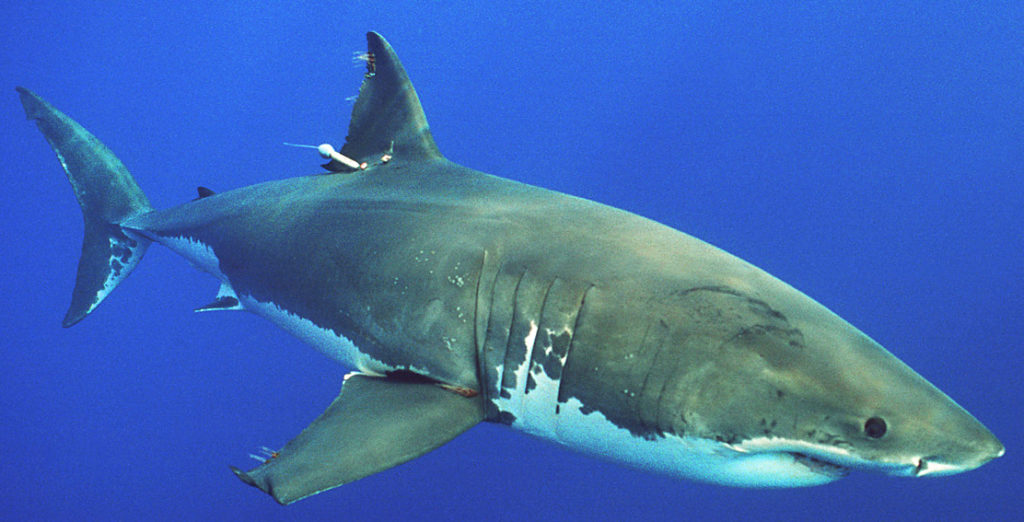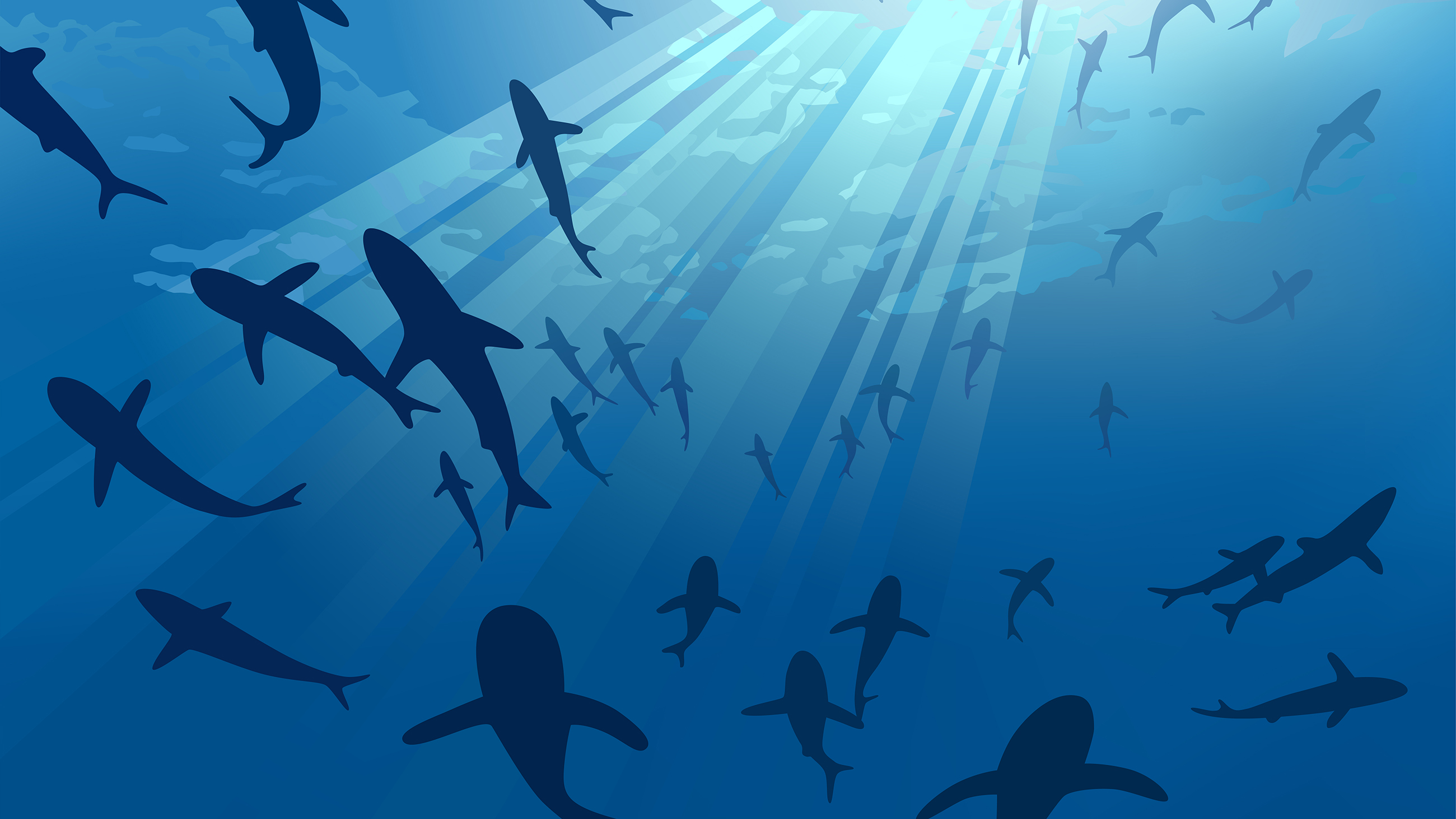Following Sharks Through Tags and Twitter
Mary Lee weighs about 3,500 pounds, lives in the Atlantic ocean, and has over 90,000 followers on Twitter.
Under normal circumstances, people would keep their distance from this female great white shark — a sharp-toothed, seal-eating, terror-inspiring fish. But through the magic of social media (and the help of a human typist), Mary Lee can crack jokes, talk to her followers, and share stories of ocean conservation. Her fans eagerly monitor her real-world movements using a shark-tracking map and a mobile app run by the research nonprofit OCEARCH, which tagged Mary Lee in 2012.

A great white shark with a satellite research tag attached to base of its dorsal fin.
It’s estimated that over 100 million of these ancient fish are killed every year, and many shark advocates see the Internet as a valuable tool. Fear of sharks, after all, is a primal instinct, and conservationists are up against deep-rooted aspects of human nature. Communities where engagement with and acceptance of local shark populations has seen improvement — parts of California, Cape Town, and increasingly Boston and Cape Cod — have walked a very long and difficult road, and supporters say organizations like OCEARCH have been instrumental in changing attitudes.
The group has fitted hundreds of sharks with satellite tags since 2009, and it is not alone in the shark-tracking business. These online maps have become a popular way for researchers to share their work, and numerous organizations have developed similar public facing tag-and-track programs.
Still, other researchers have raised questions about whether shark maps and clever tweets are the right way to engage the public, and some organizations have stirred backlash for their tagging methods.
OCEARCH, for example, has courted controversy by using chum — bits of dead fish — to attract sharks without informing residents. Two days after OCEARCH chummed South African waters in 2012, a great white fatally attacked a body surfer nearby, spurring heated debate over whether the group’s actions had led to the attack. The debate continued last month in Jacksonville, Florida, where surfers and swimmers decided to avoid the ocean while OCEARCH was in the area.
And without carefully developed educational programs, some researchers suggest, shark-tracking apps can often backfire.
“It’s not a shocker to say most communities are not happy to find out white sharks are in their community,” said Christopher Neff, a University of Sydney social scientist who examines how rhetoric about sharks influences policy and behavior. He expressed concern that without targeted education on the value of sharks as part of a healthy ecosystem, tracking maps could simply incite fear over what’s lurking offshore.
“Extra effort needs to be made to educate [communities] on the dynamic of the ecosystem,” Neff said. “People don’t like surprises, and if the surprise is a shark off your shore, people can react badly.”
In part, he suggested, that’s because not enough effort is being placed on communicating how little danger sharks actually pose to humans. “The leading story still reports a ‘shark attack’ when there are no injuries, like a shark bumping a kayak,” Neff said. “So public education is not about sharks. It’s about more than tagging the shark, and telling people they can find out more on the app. You have to get ahead of the fear.”
Marianne Long, education director at the Atlantic White Shark Conservancy, suggested that the problem was not one of chum-frenzied sharks, but rather of poor communication. She emphasized the importance of fact-based education to supplement research efforts.
“Especially working with kids, you need to create awareness that the reality is, there are these sharks there, and then get them to understand what this animal is,” Long said. “They have so many feelings, but are missing that factual component. We’re trying to replace fear with facts off the bat.”
That’s precisely what advocates of shark tagging and online tracking maps say they’re helping to achieve — though they are aware that tracking apps alone are unlikely to overcome individual shark phobias.
“[Tracking] sharks gives them a personality,” said Dr. Neil Hammerschlag, director of the University of Miami Shark Research and Conservation Program, which runs a shark-tracking map and ‘adopt-a-shark’ program. “I would say that for anyone who’s afraid of sharks, and afraid to get in the water, it’s not going to matter if we’re tracking this predator.”











Comments are automatically closed one year after article publication. Archived comments are below.
Can we watch on the web